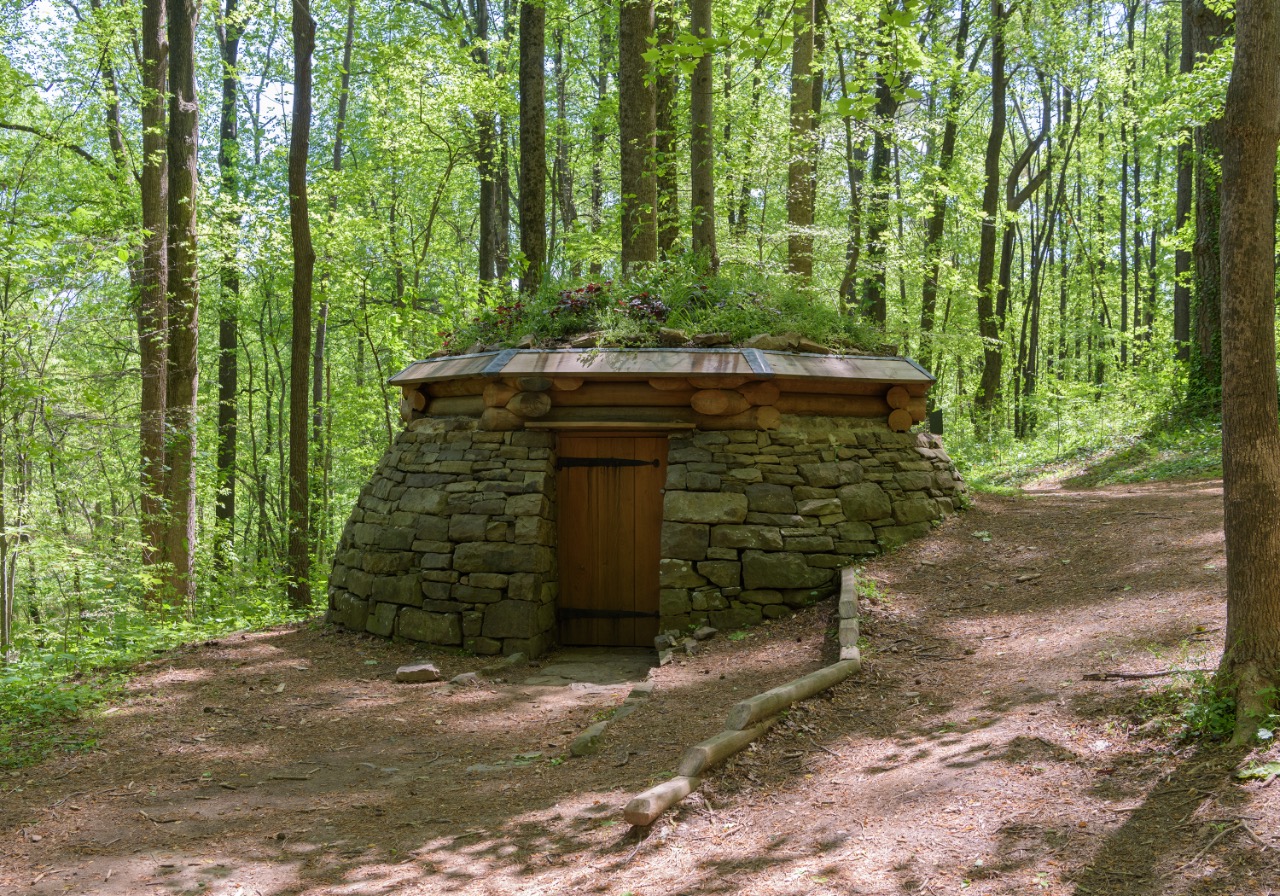Cloud Chamber for the Trees and Sky
Chris Drury[[translate(episode,'title')]]
[[translate(episode,'audioCredit') || translate(episode,'credit')]][[translate(episode,'title')]]
[[translate(episode,'audioCredit') || translate(episode,'credit')]]Audio Transcript
*Cloud Chamber for the Trees and Sky* was commissioned for the Ann and Jim Goodnight Museum Park in 2003. It serves as an oversized camera obscura, otherwise known as a pinhole camera. An aperture in its roof projects an inverted image of the sky into the chamber. Inside, your perspective is turned, quite literally, upside down. So, to see the sky and trees that are overhead, you instead look to the floor beneath your feet and the surrounding walls.
The chamber’s artist, Chris Drury, has created 15 other chambers like this one around the world. They occupy forests, hilltops, cliffsides, and other natural locales in places like the United Kingdom, Belgium, Denmark, Italy, and Japan. *Cloud Chamber for the Trees and Sky* was the ninth to be constructed — and was the first of two chambers created in the United States. The second chamber, the *Star Chamber*, was constructed at Vanderbilt University’s Dyer Observatory in Nashville, Tennessee.
The chamber here at the Ann and Jim Goodnight Museum Park is constructed from stone walls, a wooden log roof, and turf. Chris himself chose the piece of land where the chamber would be built. Here’s Chris on why this particular spot was his top choice:
"Often if I'm looking at the sky, I look up to see what, what will go on the floor. And it's always nice because if you've got a completely blue sky, you see nothing. So if you've got some leaves in there, then, then you've got something to look at."
"I looked at the site in a way, your bit of land there and, and there was a really, this really beautiful big tree and I thought it'd be nice to put it just outside of the roots of that tree so that we'd still get the image of the branches and you get the sky."
"I wanted the whole of that sky onto the whole of the building inside, including the walls. I wanted it just spread everywhere."
In 2020, after 17 years on site, the chamber’s original rooftop logs needed replacement due to natural decay. This unique task went to Ben Bridgers, the Museum’s manager of Park collection and exhibitions.
Ben dismantled the original roof to measure each log. After taking the measurements of a log, Ben used a chainsaw to carve the appropriate saddle notches into a new log that would ultimately become part of the chamber’s restored roof. When asked about the time and precision that went into the restoration effort, Ben said the following: “When it's your piece, it's trial and error. When you're replicating someone else's work, you're taking your time and making sure every log, every piece is the same size, the same cut, the same angle.”
“Every notch had to be carved with a chainsaw,” Ben continued. “And they were all at these weird angles. So you had to roll the log over, set it. If it didn't fit just right, roll it back over, take a little bit more, then roll it back. So it was this very gradual process.”
It took Ben approximately six months of work to reconstruct the roof. By the time he was finished, he had made two to four precise saddle notches into no fewer than 76 logs.
Chris Drury, *Cloud Chamber for the Trees and Sky*, 2003, stone, wood, and turf, approx. diam. 12 ft., Commissioned by the North Carolina Museum of Art with funds from the North Carolina State Art Society
